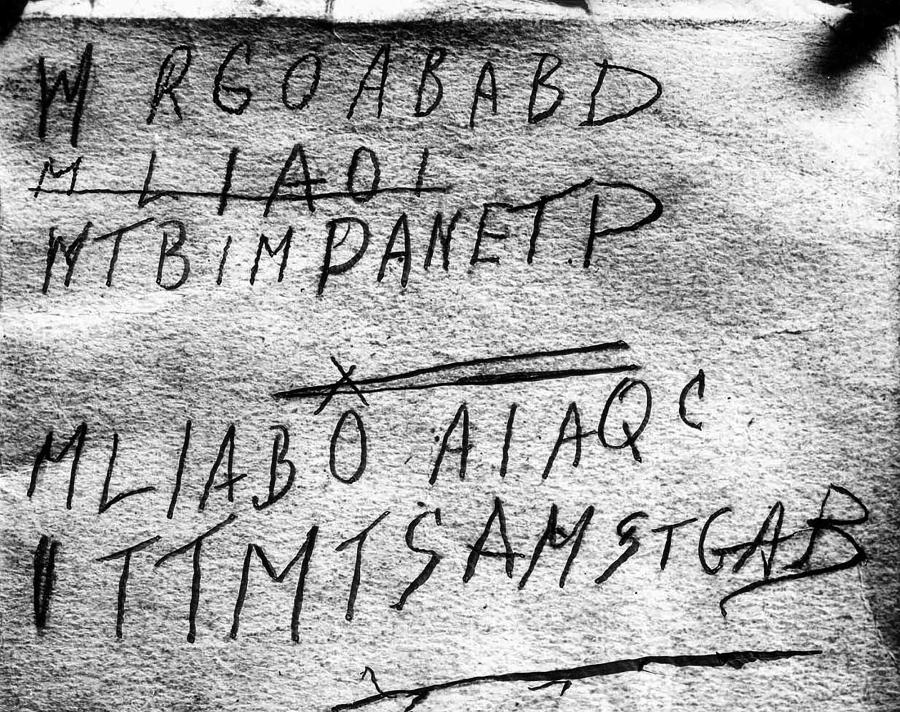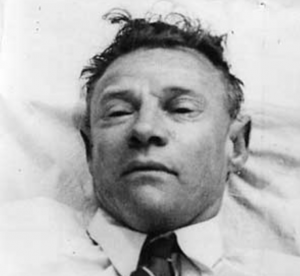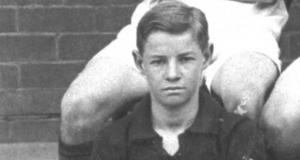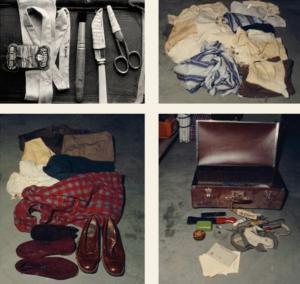
Rest of Australia's Somerton Man Case Mystery Solved Using His Own Code As Deciphered in 2021, OKCIR Sociologist Reports
Carl Webb showed, through his staged tragic poems, that unknown folks facing horrible wars, many dying on beaches too, are not phantom figures that come and go.
GREATER BOSTON, MASSACHUSETTS, UNITED STATES, April 16, 2024 /EINPresswire.com/ -- In his new and updated 2024 OKCIR Report, titled "The Somerton Man Carl Webb's WWII Death Poems Staged in His Eternal Shadow-Show “Tamám Shud”: A Lasting J. C. Williamsonian Suicide Mystery Play Still Staging, Now Featuring Us, from the Somerton Beach in Australia Since Its Opening on Nov. 30, 1948," sociologist Mohammad H. Tamdgidi reports how his 2021 reported solution to deciphering the Somerton Man's code as a suicide note anticipated and can more reliably prove the still unconfirmed (and, as proposed based on procedurally flawed mask-hair DNA analyses, not confirmable) 2022 unofficial identification of his identity as Carl Webb, break the impasse in solving the rest of the case to explain the mystery of his end of life story, and even shed light on another suicide mystery.
Tamdgidi argues that the rushed 2022 unofficial finding announcement identifying the Somerton man as Carl Webb, despite its significant contribution—while having failed in offering a reliable and scientifically verifiable proof for it—was unfortunately accompanied by a misinterpretation of Carl Webb's master identity as a conventional electrical engineer associated with a rather late-in-life employment in a tool making firm.
Carl Webb could have worked not just as a baker's son in his father's family business, but, formally or not, also as a stage technician (having been trained as an electrical fitter and instrument maker) in the J. C. Williamson Ltd. entertainment industry through his extended family and brother-in-law Gerald Thomas (Jerry) Keane's work as a Chief Mechanist in the company. Through such a family exposure, formally employed or not, he would have been exposed for many years since his teenage years to a world of performing and dancing arts and entertainment that shaped his thoughts, feelings, and sensibilities as an artist by way of his brother-in-law Keane's family and appeared most happy in that role. Becoming a conventional tools maker later in life for marriage reasons, when his father's bakery had closed and the J. C. Williamson entertainment industry was now confronting a world at war, was for him not a source of joy and satisfaction, but that of boredom and depression.
The 2022 unofficial finding investigators, including Prof. Derek Abbott and Dr. Colleen Fitzpatrick, missed seeing the significance of J. C. Williamson Ltd. as the elephant in the room of the Somerton man case, even though they marginally acknowledged the odd coincidence of a continued "connection with the ballet," finding themselves soon amid a Somerton man case of their own making, resulting in a dead-end trying to explain the many details of his life and mysterious last day events—also depriving themselves and their followers of a more reliable way of substantiating the Carl Webb identity of the Somerton man by way of the 2021 OKCIR reported solution to the code, rather than depending on an unreliably acquired and not even officially confirmable mask hair DNA footprint. However, once the elephant is seen for what it is worth and taken into the case's explanatory consideration, not only the identification of the Somerton man as Carl Webb, but also the explanation of the rest of the case and even that of another mysterious death, that of Tibor Kaldor, that took place shortly after his in Adelaide, can also become reliably possible.
The report argues that Tibor Kaldor, a previously interned (in Europe) "Dunera boy" and just naturalized (in Australia) Jewish migrant who, as an academically trained linguist expert in languages with likely experience as well in military intelligence decoding using Arabic as a medium (a language more prevalently used by Germany for intelligence purposes but less familiar to Australian intelligence at the time), helped Carl Webb render his 'death poem' into a transliterated code in tribute to his brother Roy's burial in the still Arabic-alphabet-using Malaya (now a part of Malaysia). Kaldor, overwhelmed by witnessing in Adelaide the enactment of a death poem he had helped Carl Webb encrypt, and having himself suffered abuse on HTM Dunera and previously during the war as a Left-leaning Jewish scholar, and commiserating with what a German migrant family's other relatives of their also likely Left-leaning son Carl Webb had endured at war abroad (a brother and a nephew) or at home in Australia—perhaps also fearing being (wrongly) implicated in or associated with Carl Webb's death—ended his own life on Dec. 13, 1948, in grief over his lost friend, leaving a most gently written note himself, still not revealing Carl Webb's identity in respect for their intended mysterious play act(s).
The Somerton Man code is a poetic note written by Carl Webb and encrypted using linguistic skills possessed by Tibor Kaldor. It is a transliteration of Carl Webb's poem serving at once as a love note for a son he thought was his (by way of Jessica Harkness) and could not raise and a sarcastic note for a wife (Dorothy Jean Robertson) he had separated from, one who he believed had treated him with habitual cruelty, poisoning his life, figuratively or not. The code is also a map for his play plot, the lines expressing the location and the waves surrounding the spot he planned to stage his final last death dance. Its being rendered in Arabic transliteration is an expression also of his love in memory of his brother Roy who had perished and had been buried in the still Arabic-alphabet using Malaya.
The report notes that despite his personal failings and behavior during a marital experience gone sour not primarily due to his own fault but reactive to the habitual cruelty of his spouse whose younger age can be explained by Webb's not hoping to live long to raise an offspring they may have had, Carl Webb, likely afflicted with mental anguish rooted in part in the troubling times he had lived as the youngest son of a German migrant father in Australia, and suffering from longstanding foot injuries from playing football, shoe defects prevalent in his times, and likely connective tissue illnesses from birth worsening during a lifetime resulting in an initial privately enacted attempt at his own life in mid 1940s that irreversibly deteriorated his health prospects, was at heart a highly talented creative, more a poet and a wished for performance artist who would have preferred to use his skills as a technician in the entertainment industry than a drill tools making factory.
He used his educational skills as an electrical fitter and instrument maker sharpened during his theater stage technician work or exposure thereof during the late 1920s into the late 1930s working through his extended (Keane's) family involvement with the vast entertainment company J. C. Williamson Ltd., to stage a public mystery play of his suicide act at the Somerton beach in Adelaide. He did so by way, among others, of the instrument of an encrypted "death poem" that aimed 1) to sarcastically respond to his unsuccessful 1940s marriage to Dorothy Jean (Robertson) Webb and more specifically her maintenance dues legal action filed in March 1947, and 2) to eternalize in public memory by way of a public puzzle-setting strategy the story of his life and his family in the imagination of future generations in Australia and globally, leaving a loving note for a child he thought was his, born to the also Left-leaning nurse Jessica Harkness who had conceived the child in Oct. 1946 when Carl had already separated from his married wife and begun planning his second and final suicide attempt.
Carl Webb's last poetic act was not just writing a death poem, however. The encrypted poem in writing was itself a part of the poetry he theatrically performed as a J. C. Williamsonian mystery play on his last day alive, meticulously enacted with all its tropes and metaphors, on the Somerton beach in Adelaide. Everything he did that day and all he wore, ate, and left behind, were integral tropes of his death poetry book titled "Tamám Shud." He did not leave behind just one encrypted code; November 30, 1948, was entirely a stage full of encrypted codes, placed (or not) in his suitcase, on what he wore (or not), what he ate (or not), what he did (or not), and so on, each representing something he wished to be solved publicly as an enduring and lasting puzzle. His cut-out slip "Tamám Shud" also served also as a "theater ticket" to his own lasting mystery play. Carl Webb was indeed a unique Australian poet, composing his poems in real objects and texture of everyday life, and in that sense will hopefully be recognized as the artist he was—an unknown poet of the unknown phantom figures of humanity. Those looking for the Australian poet Carl Webb's many "death poems" should therefore look no further than what he did or not on Nov. 30, 1948. His tragic entertainment act then ended up being one of the globally most gripping and lasting plays his family's J.C. Williamson Ltd. involvement led by Gerald Keane, the Chief Mechanist, produced from the Somerton beach in Adelaide.
It is most likely that Carl Webb's plotting of his last play took place also on a beach in Cottesloe, WA, whereto he had gone following departure from his employment and residence after being served court summons in April 1947. It was there on that beach that he must have finalized his plot, to be enacted on another beach, in Adelaide, having also acquired in Cottesloe his tan, remains of which was noted during his autopsy. Given the suitcase he used in his plot was a new (with label removed) imported brand, one more suited for his play plot of representing perhaps even the suffering of the "Dunera boys" whose belongings were stolen on their "allied" ship and suitcase thrown overboard, Carl seems to have bought in Perth, links for which has been found and provided in the report.
We should take Gerald Feltus's work and conclusions (as well as reports of her own daughter) seriously when they say they believed Jessica Harkness knew the Somerton man. Unfortunately, in the ever shifting blitz created by the unofficial team and their enabling media network about the proposal of the Somerton Man's identity as Carl Webb in 2022, decades of documented findings about the other side of the story were dismissed and forgotten overnight. It seems that the then still unmarried Jessica Harkness had been open to having parallel affairs in search of a suitable husband. Having approached Alf Boxall previously while also having an affair with Prosper Thomson, then married to another person, she must have had a brief affair with the already separated Carl Webb as well in 1946 following his separation from his wife, Dorothy Jean Robertson.
Carl Webb, suicidal and not having succeeded in becoming a father in a failed marriage and contemplating ending his life, may have had his own reasons to leave an offspring behind before his planned end, especially given the loss of many of his family members to old age or to war, around that time—his oldest brother also having just become disabled in 1946. Jessica Harkness's parallel affairs could have left it unclear even for her who the father of her child to be born could be. Carl Webb must have strongly regarded her son to be his, explaining why he arranged his final, first and last, visit to her house in Adelaide to see his son before his passing.
Jessica Thomson's silence throughout the decades following his death and her upbringing their mutually supposed son Robin to become an accomplished ballet dancer in Australia can therefore be regarded as a tribute she paid to the memory of a man whose physical and mental sufferings and failed marriage she had known about, sufferings that included physical pains and foot injuries, ones that found their generational and aspirational healing in Robin's ballet dancing career and success. She may have as well been one of the persons who used to leave anonymously a bouquet of flowers on the grave of the Somerton Man in Adelaide.
The global publicity of Carl Webb's life and the virtual absence of any information about the life or death (beyond a three-step hearsay) of his separated wife, Dorothy Jean Robertson, following her second divorce from her next husband Geoffrey Arthur Lockyer, by whom she was accused of habitual cruelty (a charge she chose not to challenge and was therefore confirmed in a court of law), are two sides of the same coin of the Somerton Man case. Clearly, judging from the code's decipherment, Carl Webb believed that she had poisoned his married life, having become entangled in a mutual, emotionally, and physically, abusive marital interaction. Her filing claim summons against him in 1947, when she knew he had had suicidal tendencies, must have pained him deeply emotionally, resulting in his deciding to plot his second and last attempt, but he did the second try in a different way, in public rather in the privacy of his home, such that it would serve also as a response to the treatment he believed he had experienced in his marital relations with her. The code may even be regarded as a response to her having ridiculed his interest in the Rubaiyat of Omar Khayyam as "death poetry" (ones Jestyn called "love poetry"), having known it by heart, and even writing his own poems, which Robertson acknowledged he did.
Carl Webb's encrypting his poetic code was meant to serve as a sword of Damocles for the rest of Dorothy Jean Robertson's life (and even those of his immediate family members, who must have subsequently made efforts to hide traces of her whereabout for the rest of her life), since she may have suspected that Carl Webb had implicated her in his demise amid a troubled married life, and in a way, he did, given it is poetically expressed in his encrypted code. Therefore, for all practical purposes, she was condemned to live a life in hiding, ironically fulfilling what Carl Webb had intended to do as expressed in a curse ending the last line of his encrypted death poem note. Whether she died immediately following her surgery and release from the hospital in 1955 or decades later, her mysterious absence offers an odd, but understandable, twist to the Somerton man's highly visible presence in the global imagination, since the life tales of the two in a troubled marriage ending in separation and thereafter could not really be understood apart from one another.
For in and out, above, about, below,
'Tis nothing but a Magic Shadow-show,
Play'd in a Box whose Candle is the Sun,
Round which we Phantom Figures come and go.
— Omar Khayyam (FitzGerald's Translation, 1st edition, no. 46)
Note: Due to other research commitments, and preferences for written communication and privacy, the author can be reached only via email. He is not interested in, nor available for, media or online interviews or appearances. All that he has wished to contribute to understanding the case are available in his published reports on the topic.
Mohammad Tamdgidi
OKCIR: Omar Khayyam Center for Integrative Research
pressrelease@okcir.com
EIN Presswire does not exercise editorial control over third-party content provided, uploaded, published, or distributed by users of EIN Presswire. We are a distributor, not a publisher, of 3rd party content. Such content may contain the views, opinions, statements, offers, and other material of the respective users, suppliers, participants, or authors.






